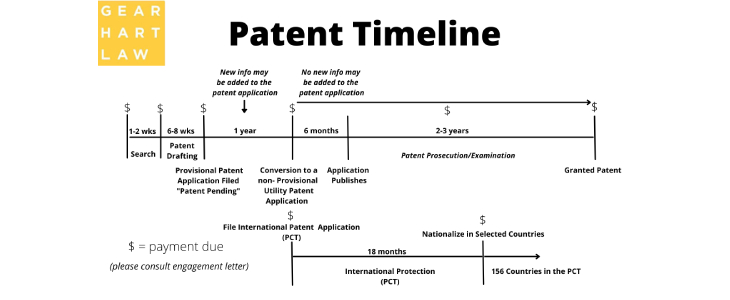Utility patents play an important role in protecting the innovations and creative efforts of inventors. These legal instruments grant exclusive rights to inventors, allowing them to safeguard and capitalize on their creations. From groundbreaking technological advancements to everyday improvements, utility patents ensure that original ideas are recognized and rewarded, fostering a climate of innovation and development.
What Is a Utility Patent?
A utility patent is a type of legal protection granted to inventors for new, useful, and non-obvious inventions. This category of patent covers a broad range of innovations including processes, machines, manufactured articles, compositions of matter, and improvements to existing inventions. The key criteria for a utility patent are that the invention must be novel, meaning it hasn’t been previously known, and it must offer some practical utility or functionality. Additionally, the invention should not be an obvious improvement of existing technology to someone with knowledge and experience in the field.
Once granted, a utility patent gives the inventor exclusive rights to prevent others from making, using, or selling the patented invention in the United States for a limited period, typically 20 years from the filing date of the patent application. During this time, the patent holder can commercially exploit their invention, either by producing and selling it themselves or by licensing the rights to others. After the patent expires, the protected invention enters the public domain, allowing anyone to use or sell the invention without infringing the patent.
Why Utility Patents Matter to Inventors
By holding a utility patent, an inventor gains a competitive edge in the market, as it allows for a period of monopoly over the product or process. This period of exclusivity not only incentivizes inventors to develop new and unique products but also offers the potential for significant financial rewards through either direct commercialization or licensing agreements. Utility patents play a critical role in attracting investment and partnerships, as they assure investors and collaborators of the uniqueness and protected status of the invention. For startups and individual inventors, patents can be instrumental in negotiating with larger companies and can act as a powerful tool during funding rounds. Patents thus not only protect but also empower inventors, providing a foundation for future innovation and business success.
The Process of Obtaining a Utility Patent

Understanding the process of obtaining a utility patent is essential for inventors looking to protect their innovations. Here are the key steps involved in securing a utility patent:
- Initial Research and Preparation: Before filing for a utility patent, it’s essential to conduct thorough research to ensure that the invention is indeed novel and non-obvious. Inventors should search, with the aid of an attorney, existing patents and publications to verify that their invention hasn’t already been patented or disclosed. Preparing descriptions, drawings, and possibly a prototype of the invention can also be helpful for the patent drafting process.
- Filing the Patent Application: The process formally begins with filing a patent application with the United States Patent and Trademark Office (USPTO). The application must include a complete disclosure of the invention, claims defining the scope of the patent protection sought, and, if applicable, drawings. Inventors can choose between filing a provisional application, which secures a filing date but does not begin the examination process, and a non-provisional application, which starts the formal patent examination process. The requirements for a provisional application are not as strict as those required to submit a non-provisional application.
- Examination by the USPTO: After filing, the application is reviewed by a patent examiner at the USPTO. The examiner assesses the invention against the criteria of novelty, non-obviousness, and usefulness. This phase often involves a back-and-forth communication between the patent attorney and the examiner, addressing any concerns or objections raised by the Examiner, who will send written correspondence to the patent attorney in the form of documents known as “office actions.”
- Patent Granting and Maintenance: If the application successfully meets all criteria, the USPTO grants the utility patent. Once granted, patent holders are responsible for maintaining their patents, which includes paying maintenance fees at predetermined intervals to keep the patent in force. Patents typically last for 20 years from the filing date, after which the invention enters the public domain.
Enforcing Utility Patents
Enforcing a utility patent involves legal actions against any infringement, which is the responsibility of the patent holder. If infringement occurs, the patent owner may need to file a lawsuit to enforce their rights. This process often necessitates the assistance of a patent attorney to navigate the complexities of patent law and to ensure proper legal action and compensation.
International Utility Patents
Utility patents protect functional inventions and are vital for inventors seeking global market reach. The process involves navigating different countries’ patent systems, each with unique criteria for what constitutes a novel and useful invention. The Patent Cooperation Treaty (PCT) is instrumental here, allowing a streamlined initial filing that can be pursued in multiple countries. However, securing a utility patent internationally requires careful alignment with each country’s specific legal standards during the national phase of the application. This ensures that the functional aspects of the invention are adequately protected across borders, reinforcing the inventor’s global presence.
Get Help With Your Utility Patent
Utility patents are a vital tool for protecting and leveraging your innovations. Understanding and navigating the complexities of patent law can be challenging, but securing this protection is crucial for any inventor. If you’re seeking to safeguard your intellectual property, our experienced team at Gearhart Law is here to assist you. Don’t hesitate to reach out to us for skilled guidance and support in turning your inventive ideas into protected assets.

